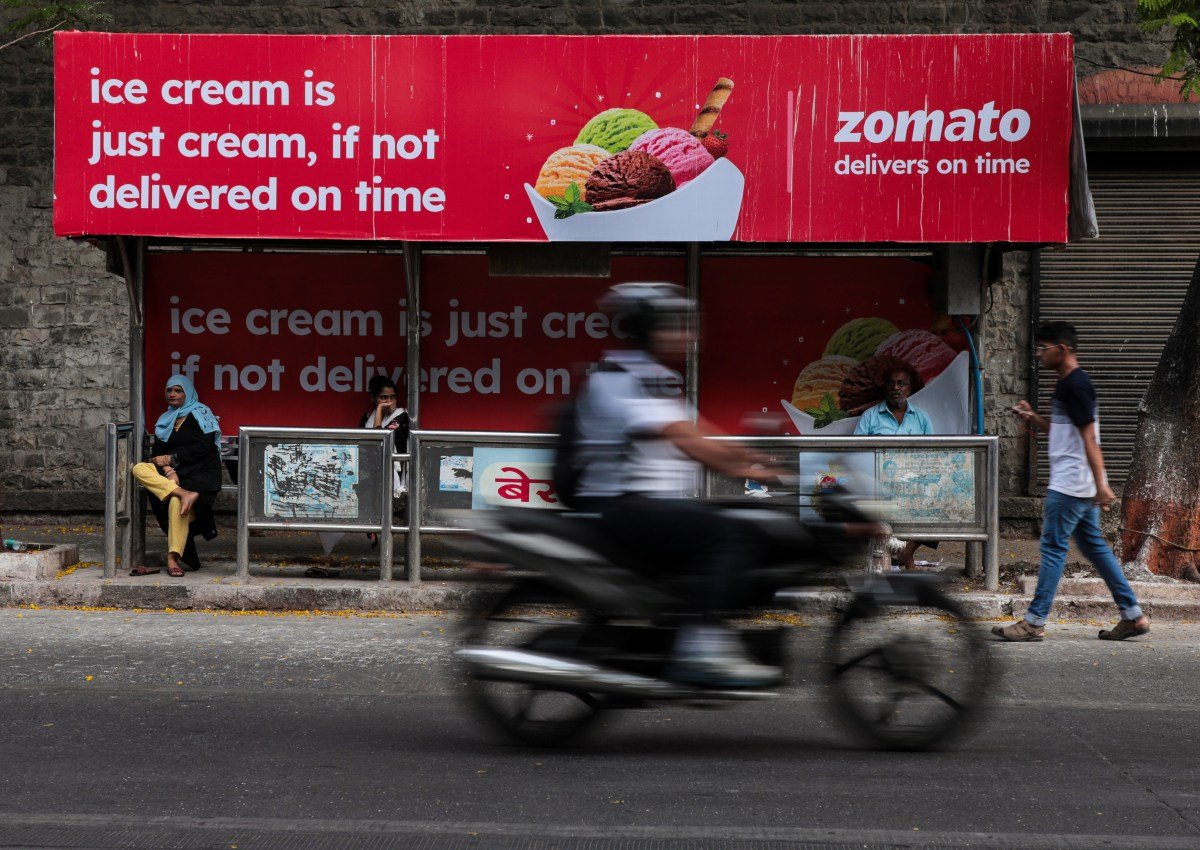As quick commerce slowly fades in many markets and well-funded startups struggle, India stands out as a vibrant outlier. In fact, the quick commerce market in India has seen a remarkable 10-fold growth between 2021 and 2023. This growth can be attributed to the ability of quick commerce to cater to the distinct needs of urban consumers who seek convenience for small, unplanned purchases.
Despite this impressive expansion, quick commerce has only captured 7% of the potential market in India. According to JM Financial, the total addressable market (TAM) for quick commerce is estimated at $45 billion, surpassing even the food delivery market.
Market Leaders in India
According to a recent analysis, Zomato’s Blinkit leads the quick commerce market in India, with a 46% share of the market by GMV (Gross Merchandise Value) in the quarter ending in December. Following closely behind is Swiggy’s Instamart with a 27% share. Newcomer Zepto has quickly gained market share, securing 21%, while Bigbasket’s BB Now trails with a 7% share. It is worth noting that Dunzo, backed by Reliance Retail and considered a pioneer of the quick commerce model in India, has virtually lost its entire market share.
With more than 10 active players, the space was very competitive a couple of years back. It appeared that an intense phase of multi-year cash-burn would soon follow. However, contrary to expectations, several players including some well-funded ones folded early in their endeavour.
JM Financial further explained, “while some faced funding challenges, a few others were affected by structural issues such as lack of product market fit, inability to solve the hyperlocal complexity, inability to build a robust end-to-end supply chain, and failure to create a strong brand recall.”
The Key to Success: Efficient Supply Chains
As quick commerce players compete for a larger share of the market, the success of their ventures depends heavily on the development of efficient supply chains. To achieve this, companies are making substantial investments in dark store operations, inventory management, and establishing direct partnerships with FMCG (Fast-Moving Consumer Goods) manufacturers and farmers.
By circumventing traditional distribution channels, these firms aim to enhance product quality, expedite delivery times, and boost overall operational efficiency, industry experts said.
Dark stores, the backbone of quick commerce operations, have also significantly expanded their product offerings. In fact, they now house over 6,000 SKUs (Stock Keeping Units) per store, a substantial increase from 2,000-4,000 SKUs just a few years ago. This sets them apart from traditional neighborhood kirana stores which typically have 1,000-1,500 items and large modern retail stores with 15,000-20,000 items.
- Dark store product offerings: 6,000 SKUs
- Kirana store product offerings: 1,000-1,500 SKUs
- Large modern retail store product offerings: 15,000-20,000 SKUs
This increase in product offerings is just one factor contributing to the noticeable surge in average order value among quick commerce players. In fact, the average order value has risen to around Rs 500 ($6) from the previous range of Rs 350-400. This sets quick commerce apart from kirana stores where customers typically spend Rs 100-200 per transaction.
- Quick commerce average order value: Rs 500 ($6)
- Kirana store average order value: Rs 100-200
Profitability Remains a Concern
Although the convenience offered by quick commerce is undeniable, profitability remains a concern for investors. Zomato’s Blinkit aims to achieve adjusted EBITDA break-even by the first quarter of fiscal year 2025, while Zepto has set its sights on EBITDA profitability in 2024. Swiggy’s Instamart and its parent company have also shifted their focus to profitability, with the peak of investments in the business now behind them.
The Future of Quick Commerce in India
While the quick commerce market in India is growing, the long-term sustainability of the model remains to be seen. With intense competition and the constant need for heavy investments in technology and supply chain, profitability may prove elusive for some players. Additionally, the growth potential of the market may be limited by the concentration of demand in urban areas. Smaller cities and rural regions present unique challenges in terms of population density and consumer behavior, limiting the market’s potential for growth.
The market may draw even more heavily-funded players. Flipkart has expressed interest in entering the quick commerce market as early as May this year, as reported by TechCrunch last week.








